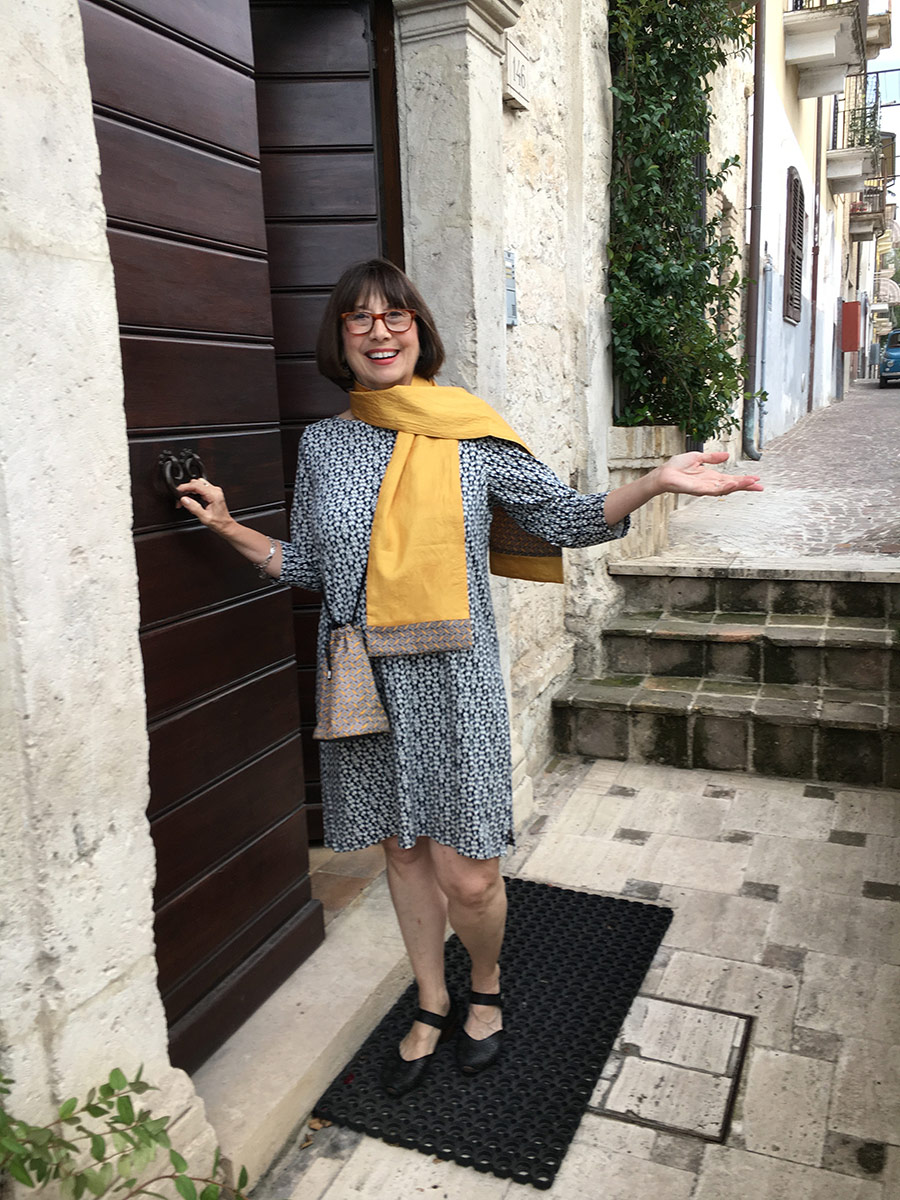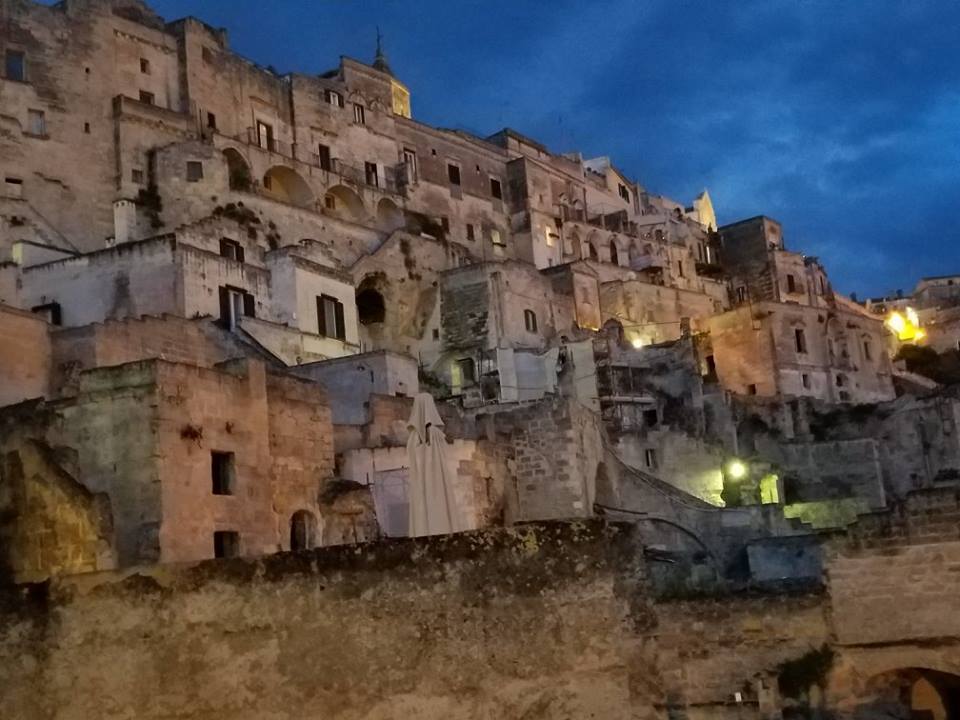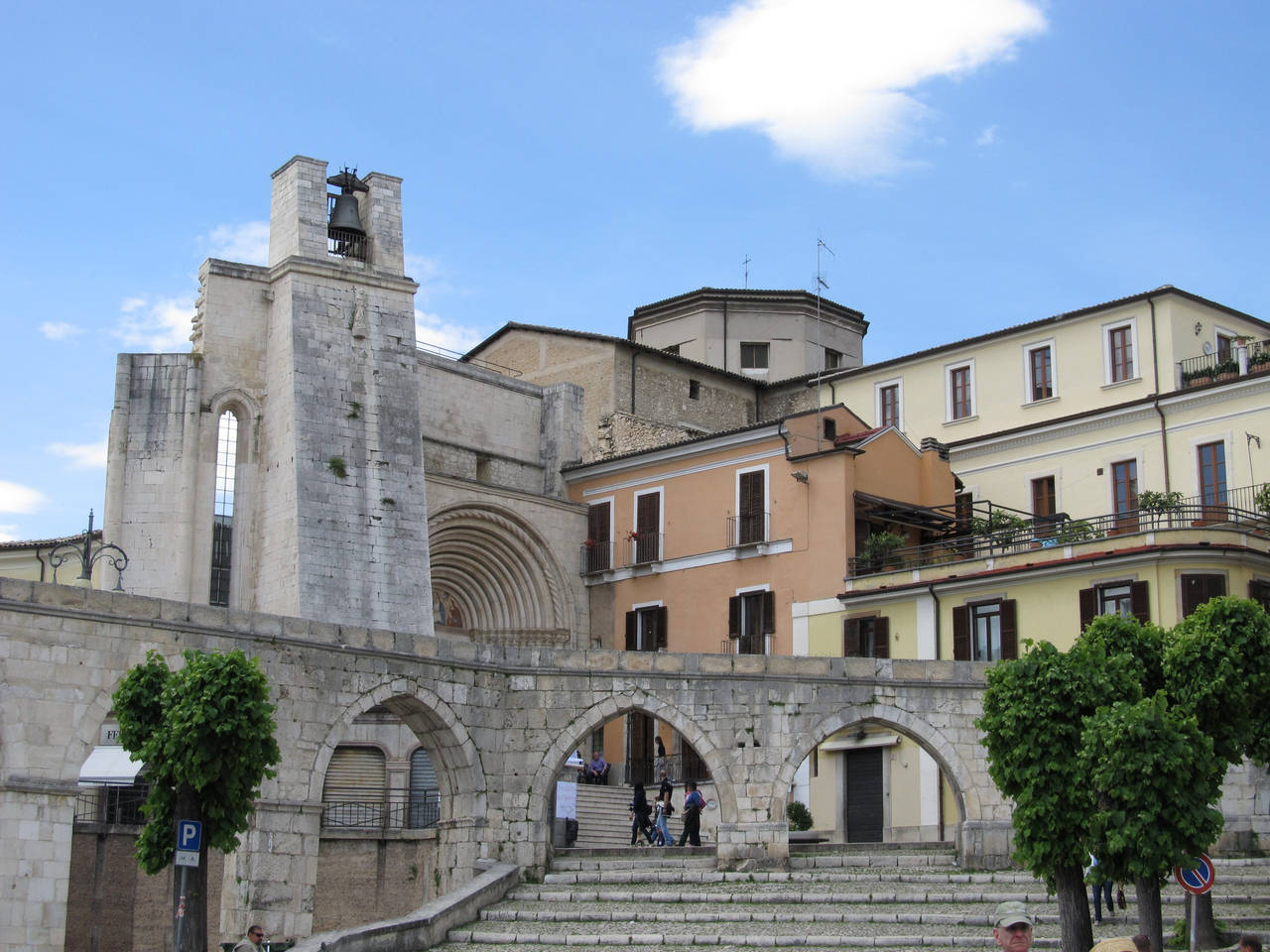This cooking tour is dedicated to the people who taught me to live, to cook and everything about life. — Anne Robichaud
I’d known about Anne Robichaud for almost two years before I finally met her. My friend Rosemarie hired her as a tour guide when she went to Assisi in 2010. And her name is all over the internet in connection with Umbria, including on the Italian Notebook site. When I learned that Anne was coming to the U.S. to do a series of cooking classes and lectures, I had to go and meet her.
Anne has been living in Assisi, in Umbria, since 1975. A French Canadian, born in Massachusetts to an Irish mother and raised in Wisconsin, Anne became enamored of Italy on a junior year abroad program through Loyola/Chicago. It brought 280 students to study in Rome from all over the U.S. and many of them are still very good friends. The class I went to was, in fact, hosted by a woman from Anne’s program and there were two other former students in attendance.
After her gap year, Anne went to graduate school at UC Berkeley and then set off with about $900 to try to get around the world. She ended up teaching at the International School in Rome and over the Christmas break she and a friend decided to go to Sicily. When their two weeks were up, they got on a packed train to go back to Rome. Little aware that you don’t leave Sicily on January 7 — because it’s the end of Christmas vacation and the day after Epiphany — the train was overflowing with immigrants going to all parts of Europe, and there was no room to sit. They spent half the night on the floor, but about mid-way through, they found seats and there was one empty seat next to Anne, and Pino — the man she would marry — sat in it.
Pino went back to Milan, but he and Anne reconnected a month or so later and friends who had this rundown farmhouse in the hills outside of Assisi invited them to stay. When the friends were called back to the States, Anne and Pino (who was originally from Palermo) rented it.
“There was no hot water, no electricity, no passable roads. And we went with, I think, $118.26 between us, but we had a tremendous desire to work the land,” she recalls. “And people later asked, ‘Is that because you grew up on a farm in Wisconsin?’ And I said, ‘No, it was because I was at Berkeley in 1972.’”
They learned everything from their neighbors — farming, animal husbandry, cooking, attention to detail and hard work — and later found out they all had bets about how long she and Pino would last. Well, it’s been nearly 40 years and they’re still there, still working hard.
“We did not depend on the nine acres of land to give us a living,” she says. “Pino went to work with a stonemason (he’d been a chemical analyst) and he’s now considered really one of the best in the Assisi area in the restoration of medieval architecture.”
As the children came along, their farm labors decreased and now they only have token donkeys and goats. But at one time they had pigs that became prosciutto, cappicola, salami – and there were always rabbits to slaughter. Pino killed them and Anne had to gut them. Pino killed the ducks, geese, guinea fowl, chickens, turkeys and he’d throw them on the kitchen table and she’d have a boiling cauldron of water in the fireplace. How? Put the bird in, pull it out, pluck, split it open, gut it and cook it. She was cooking what she’d seen the farmwomen cooking because they all collaborated together.
Outside of their children, the neighboring farm people are the most important people in their lives. Like Ashley and Jason Bartner in Le Marche, Anne and Pino came to be “adopted” by the locals who were keen to share their traditional cucina povera with the newcomers — once they believed the newcomers were really serious about staying, working and learning!
Anne, The Umbrian Tourist Board
On September 26, 1977, while Anne was director of the Assisi Elderhostel program, an earthquake hit.
News went around the world that the Basilica of Assisi had collapsed, and tourism virtually ground to a halt in Umbria. Most people do not go to Orvieto or Perugia or Spoleto unless they also go to Assisi. What to do?
First, her former Elderhostelers started to write to Anne: are you alright, is your family alright, is there anything we can do? And she wrote back to them: Yes, and please get out the word that we’re fine, and that the Basilica did not collapse. Two couples wrote to her because they knew she was a lecturer with a vast knowledge of Umbrian history, architecture and cuisine. They said, “You put together the slide lecture and come over and tell America that Assisi is still standing.”
Knowing that Anne was going to America to bring back tourism, the Italian government got her into sites to photograph that were off-limits to most people. AlItalia paid her long flights and the Commerce Board of Assisi paid all her interior flights. She left in February 1978 and, thanks to her Elderhostel and gap year contacts, lectured at Vassar, Smith, American University, Portland Fine Arts Museum, University of Texas/Austin, NYU, UCLA, USC, St. Louis University, Loyola Chicago – 26 lectures in very prestigious venues. She was even televised in Ohio. Thus began Anne’s annual spring pilgrimage back to the States for a lecture and cooking tour. Umbria was back on the map.
To find out where she’s going to be in 2013 and how you can attend a lecture or cook with her, check out her website.
The only American licensed tour guide
As director of the Assisi Elderhostel program for 12 years, Anne naturally became fascinated by what she was hearing from the guides about Umbrian art and history, and in 1992 decided to close her language school to focus on taking the guide exams herself. A friend in Florence had told her that they were even tougher than her doctoral dissertation, so Anne buckled down and studied everything Umbria for two long years. During the written part of the test (all in Italian, of course) half of the 500 people being tested walked out of the room. Of the original 500, only 35 qualified to take the second (oral) part of the exam, scheduled for four months later. She passed — and is still today the only American tour guide in Umbria.
I asked Anne what she likes best about Umbria, and if she has a favorite city. She said she loves the variety of what Umbria has to offer. Assisi is best, because she lives there. Gubbio, because it’s a perfectly restored medieval town. Perugia because it has the most exquisite Renaissance period in all of Umbria. Spello, because it’s what Assisi would be like if Francis hadn’t been born there. Deruta, for its pottery. Narni, for its 12th century frescoed church in a grotto discovered under a 13th century church 12 years ago by rock climbers.
If you’re going to be in Umbria, be sure to get in touch with Anne before you go. She’s licensed throughout the region and will give you a unique insight into this historic and drop-dead gorgeous region that is known as “The green heart of Italy.”
The Food of Umbria
Anne has some very strong opinions about how food is “done” in the U.S. vs. in Umbria.
“Food is communication,” she says. “I talk about how colors and smells and tastes transmit messages to people, and how it’s important for young mothers here to say something other than, ‘Put your coat on, we’re going out for dinner.’ Tomato sauce on the stove when you get up in the morning is a different kind of message from a mother.”
Umbrian cuisine is a classic example of the Mediterranean Diet: seasonal ingredients, picked, cooked and eaten as quickly as possible after they leave the garden. If it’s meat, it’s slaughtered almost immediately. The characteristic foods of the region are legumes, truffles, and prosciutto. Wine-wise, if you can get your hands on a bottle of Sagrantino, you will be in heaven, no matter what’s on the plate.
For our cooking class, Anne wrangled 18 people around a medium-sized kitchen in suburban Bethesda, MD and — providing us with recipes for appetizers, salads, main courses, pasta and desserts — choreographed us into a lean, mean Italian cooking machine. When we finally sat down to partake in our shared experience, it was glorious, and well worth the time and learning curve.
Today, Anne’s farm neighbors are teaching her the regional recipes and the traditions because their own children are leaving. The kids don’t want the traditions anymore. And what are they going to do with 17 acres of farmland or 50 acres of vineyards, anyway? (Give them to me and Tim, maybe??? Pleeeeeeze. . .) So the locals are opening their arms to these newcomers because they’re thrilled that somebody is paying attention.
“But I’ll tell you something else,” says Anne. “They wouldn’t want their kids to do it. They want the famous word benessere – well being – for their children. They’re all sorry to see it end but as they say, it’s inevitable.”
As is, I hope, a trip to Umbria for you. You’ve got to go. And you can’t miss an opportunity to meet up with Anne, whether it’s on her own Assisian turf or back here in the States next spring. If you’d be interested in seeing Umbria with Anne, let me know and we’ll plan a trip!
Buon viaggio!

Linda Dini Jenkins is a card-carrying Italophile, travel planner, freelance writer, and amateur photographer. Travel is her passion, so writing about her travels just comes naturally. She hopes all her travelers find a way to express their joys, surprises, and fears as they travel and gives every traveler a nifty journal to help smooth the way. Learn more…






